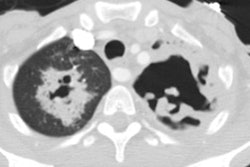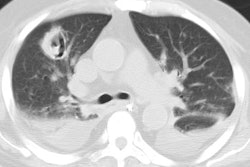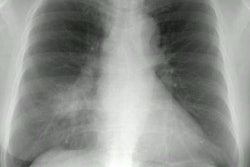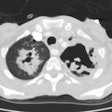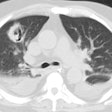Mediastinal fibrosis complicating histoplasmosis.
Loyd JE, Tillman BF, Atkinson JB, Des Prez RM
Mediastinal fibrosis, the most serious late complication of remote infection by Histoplasma capsulatum, is a thick, dense fibrotic capsule which surrounds a small mediastinal focus of old caseous adenitis. The fibrotic process may accrue over prolonged periods and extend within the lumina of critical mediastinal structures to produce complete occlusion. We summarized clinical and radiographic data for 71 patients with mediastinal fibrosis; the criteria for inclusion were the clinical demonstration of occlusion of major central airways (trachea or mainstem bronchus) or major vessels (pulmonary arteries or veins) and the absence of other disease processes which might cause such obstruction. We selected 65 patients who met these criteria from the medical literature of the last 40 years and report 6 new cases from our experience. The majority of patients were diagnosed between ages 20 and 40. The most common symptoms included hemoptysis, dyspnea, and cough. An accentuated pulmonic component of the second heart sound, wheezing, and localized murmur were among the physical findings reported. Radiographic abnormalities consisted of mass lesions and atelectasis or infiltrates, but were often nonspecific. Chest radiography was deceptively normal in some patients, even in the presence of major central airway or vascular occlusion, especially when the focus was subcarinal. Computed tomography has particular promise to depict the mediastinal abnormalities in this process. Surgery had minimal therapeutic benefit. Because of incomplete followup, the mortality of 30% in this series surely does not represent the true overall mortality of mediastinal fibrosis.
